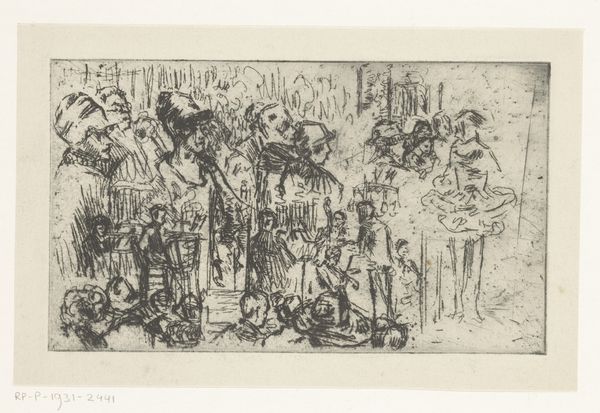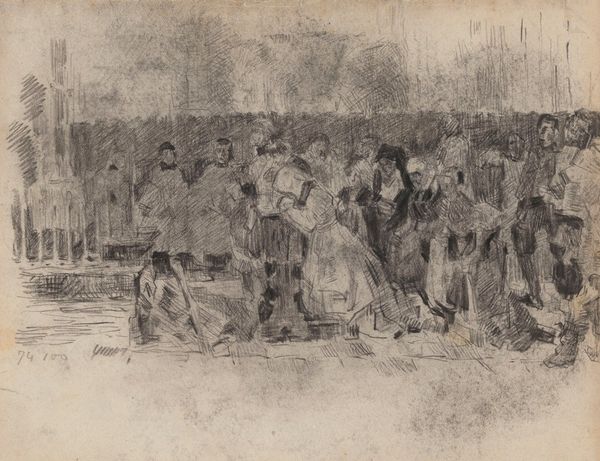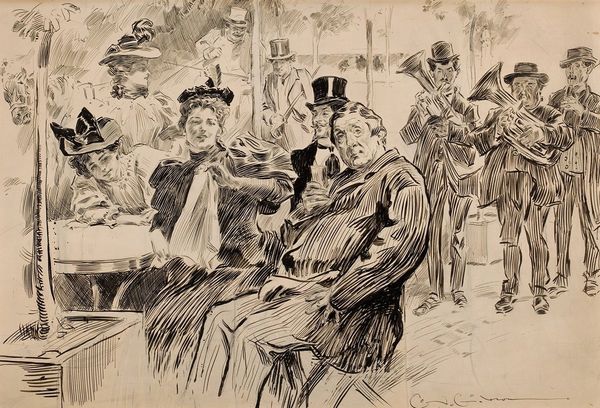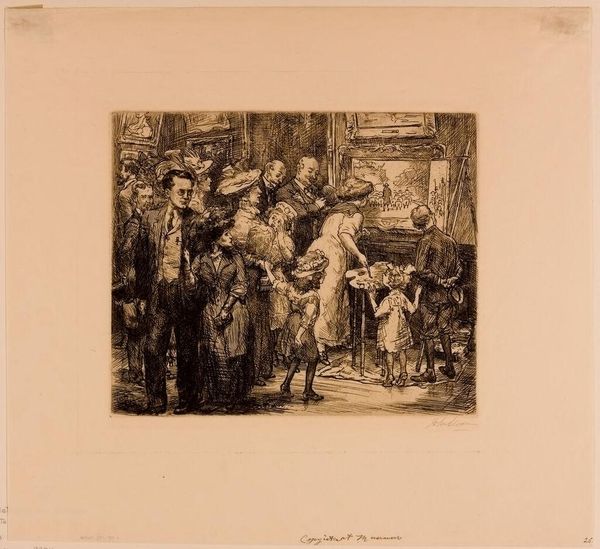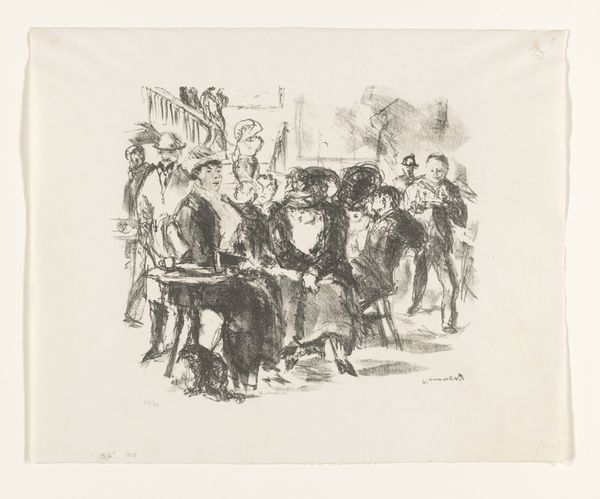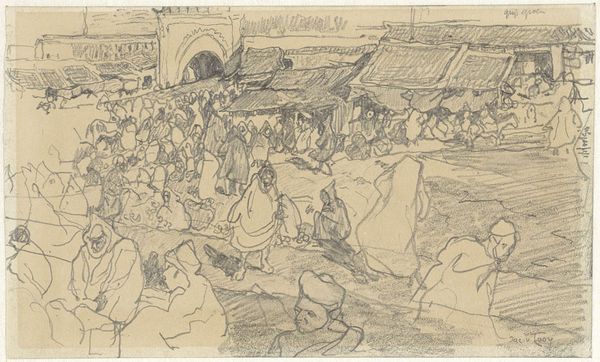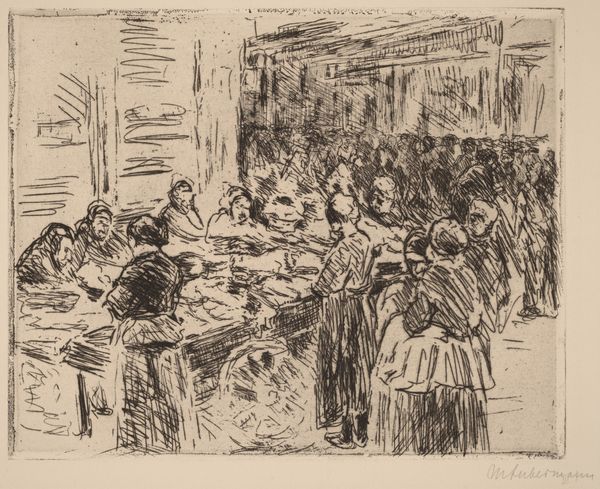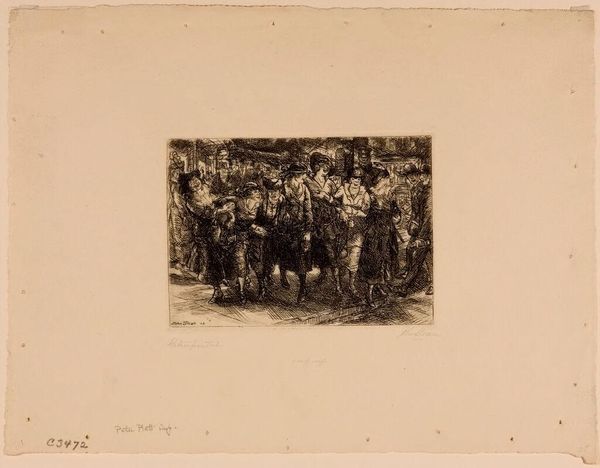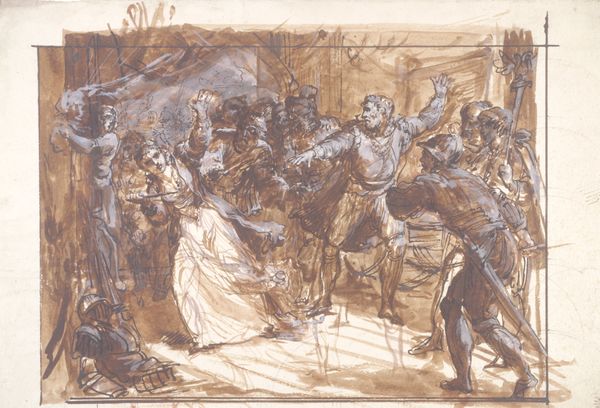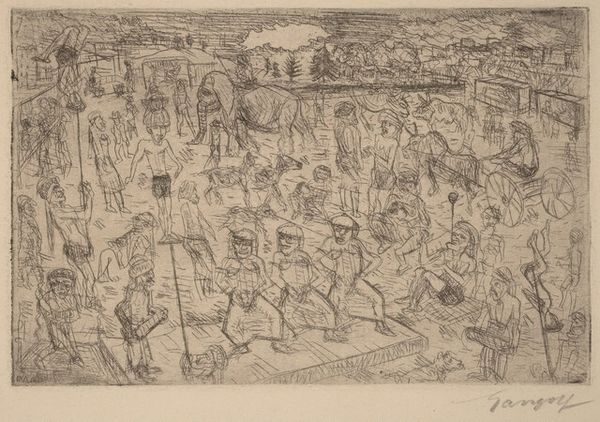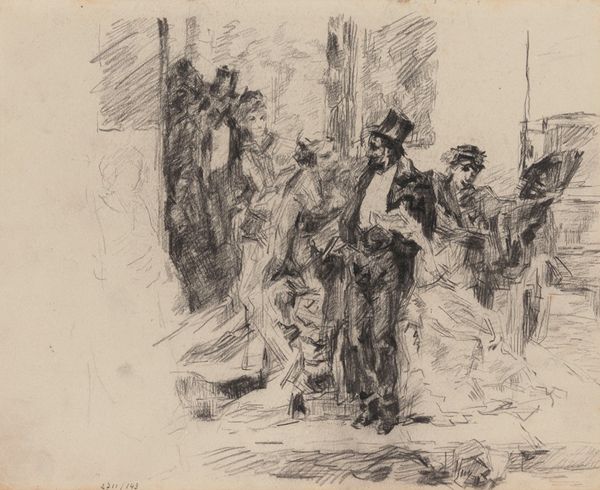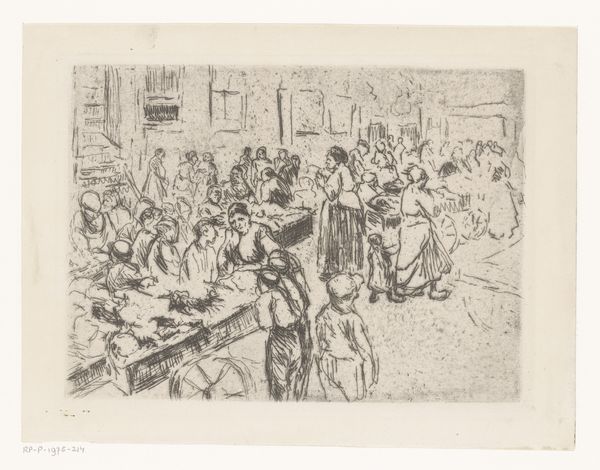
drawing, charcoal
#
portrait
#
drawing
#
charcoal drawing
#
figuration
#
social-realism
#
group-portraits
#
expressionism
#
line
#
charcoal
Copyright: Public Domain: Artvee
Editor: This charcoal drawing, “Soldiers and Civilians” by James Ensor, shows a crowded group of people, seemingly a mix of military personnel and civilians. There's a palpable tension and unease in the sketch, and the quick, nervous lines add to that feeling. What social dynamics do you think Ensor is exploring here? Curator: The title itself presents a dichotomy, doesn't it? By juxtaposing "soldiers" and "civilians," Ensor forces us to confront the power dynamics at play, particularly the frequent disruptions caused by the military within civil society. Consider the historical context – without a date, it’s harder to know the exact setting, but Ensor lived through immense political turmoil. What might a modern lens focused on power structures tell us? Editor: Perhaps he's commenting on the militarization of society or the blurred lines between those who serve and those who are served. I hadn’t considered how topical it remains. Curator: Exactly. The very medium, charcoal, also lends itself to the socio-political message. Charcoal offers the potential to portray a wide variety of shades. However, this composition seems to limit this broad spectrum and appears largely devoid of mid-tones, instead settling on stark, unyielding juxtapositions between dark and light – consider this in tandem with our earlier observation on "soldiers" versus "civilians". How might the cultural contexts further expand upon the drawing's socio-political message? Editor: I see what you mean. The artist might be pointing at something like the banality of power. It’s less about the individuals and more about systems and ways of thinking. Curator: Precisely. This approach moves beyond individual actions and enters a broader understanding about systems. Editor: I've learned that even a seemingly simple sketch can hold such complex social commentary. It really underlines the power of art to reflect on contemporary realities. Curator: Agreed. Examining art through intersectional lenses enriches not only our understanding of the artwork but of the society that birthed it, and of ourselves.
Comments
No comments
Be the first to comment and join the conversation on the ultimate creative platform.
